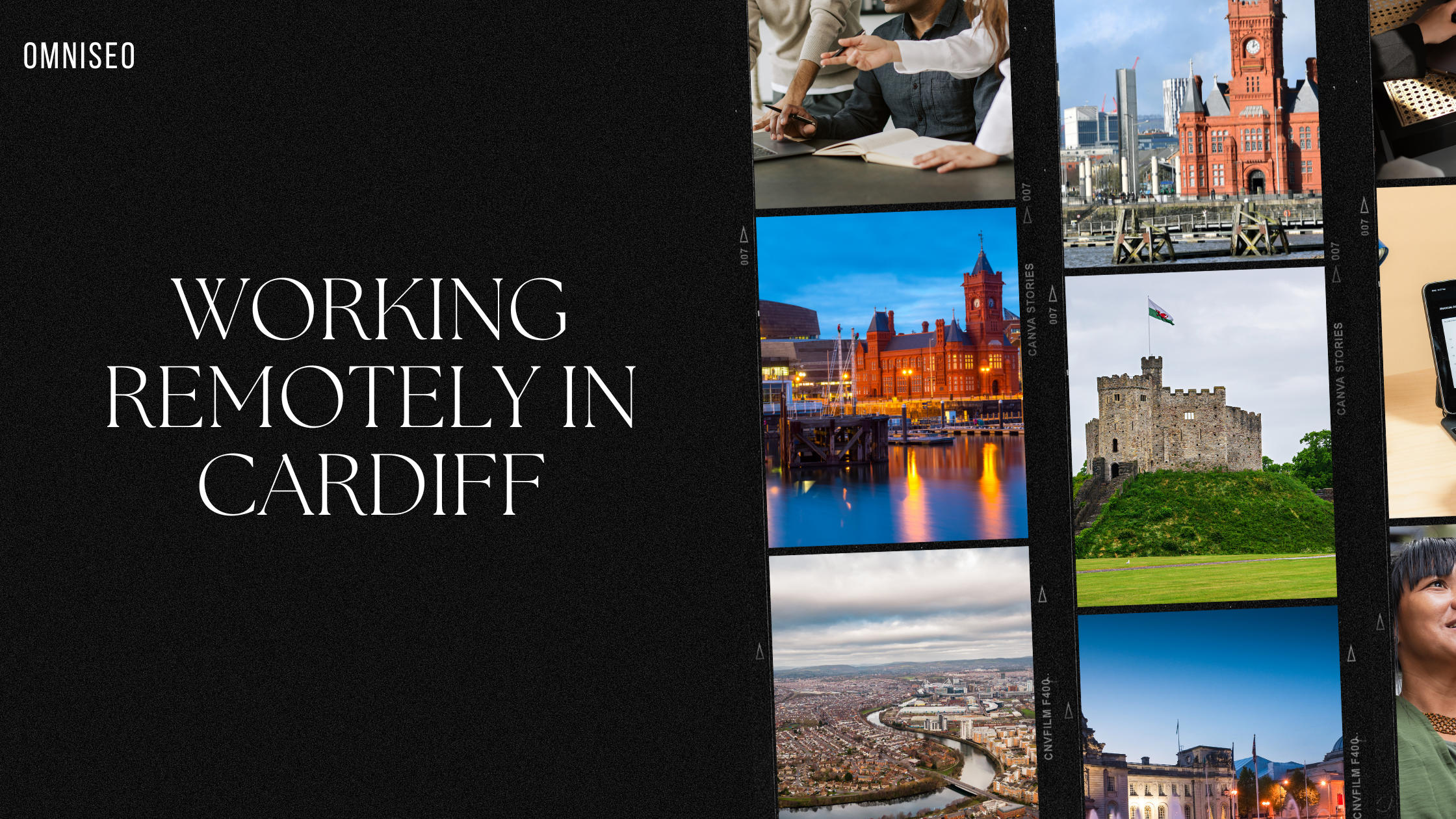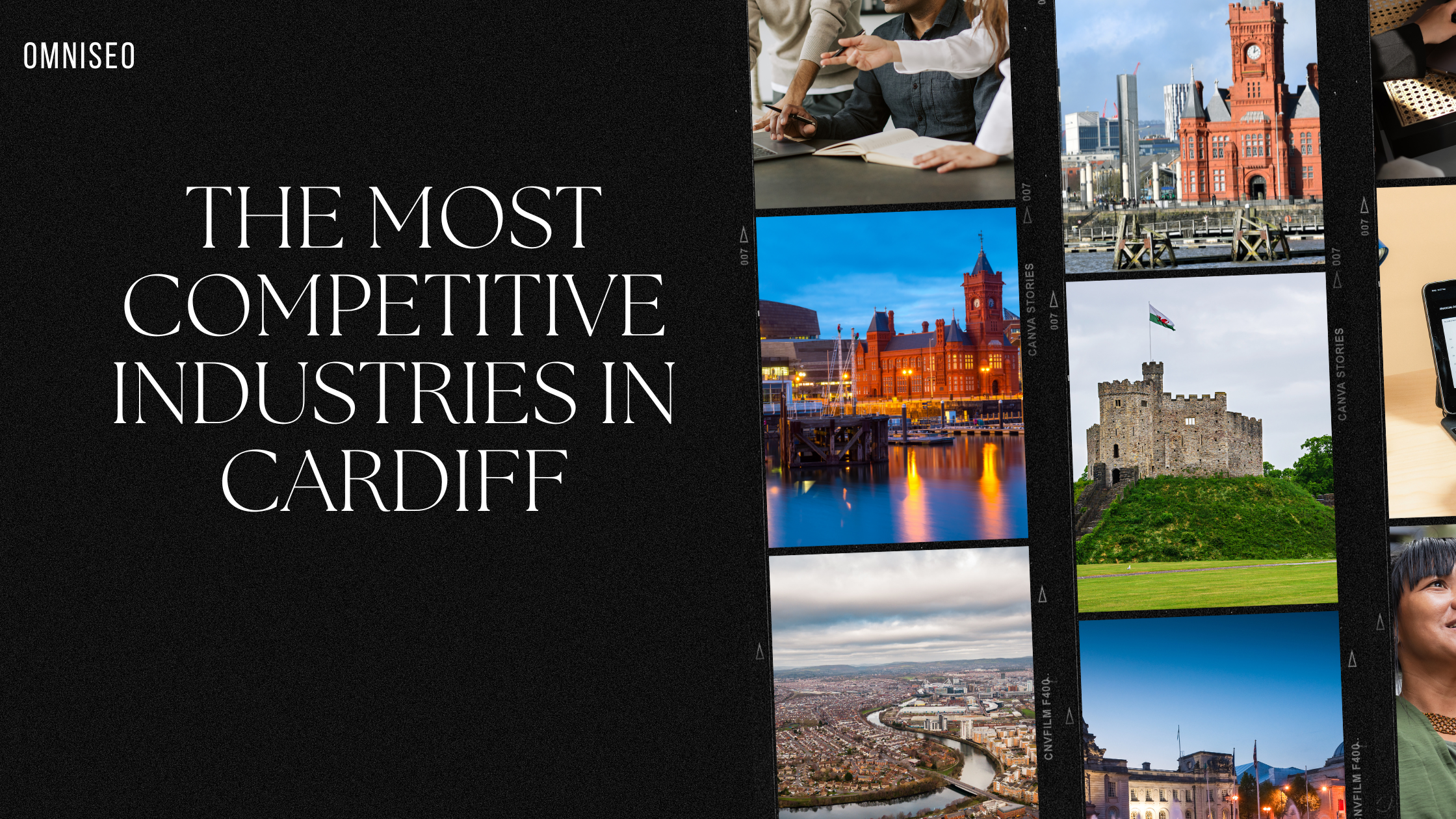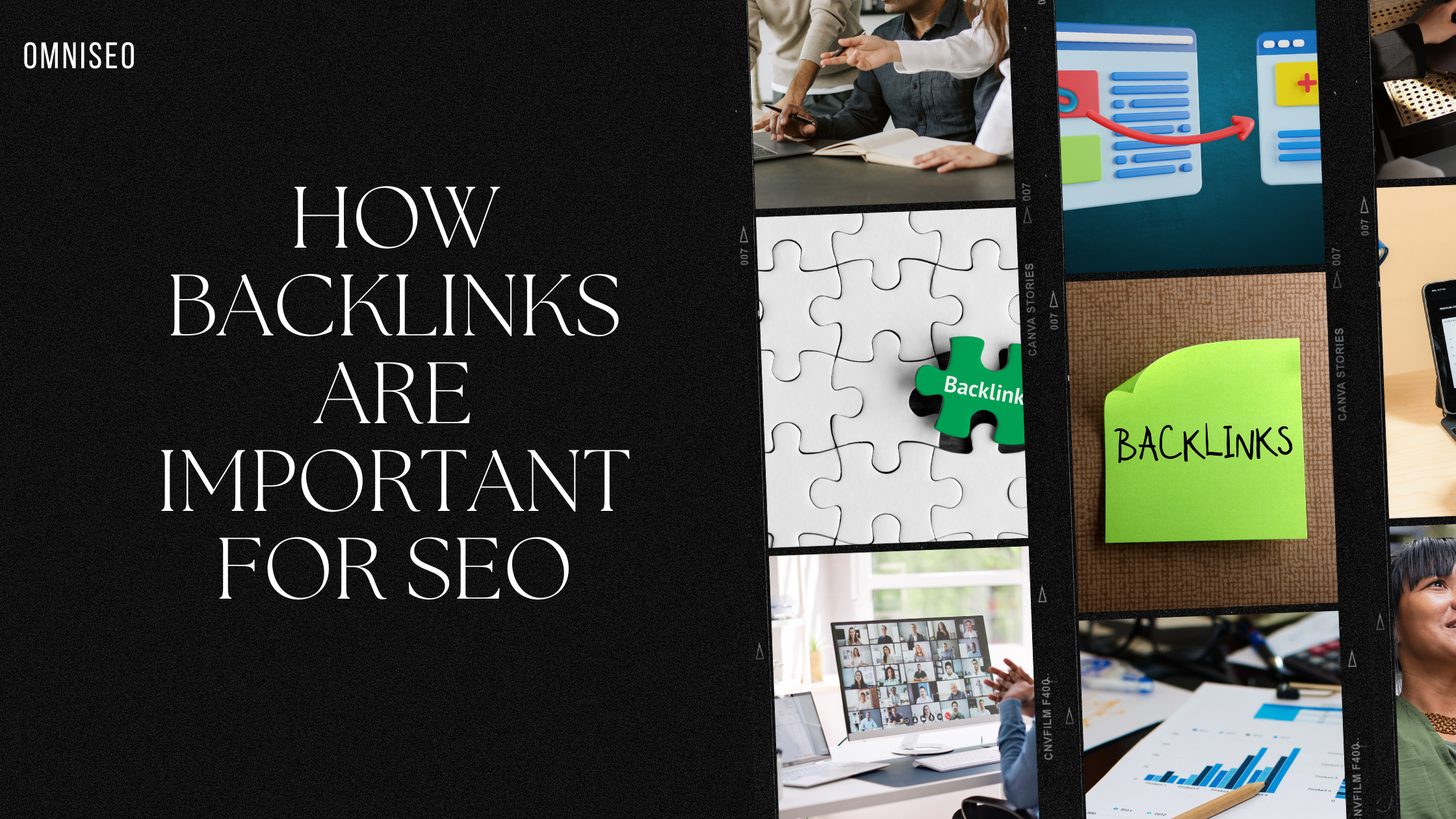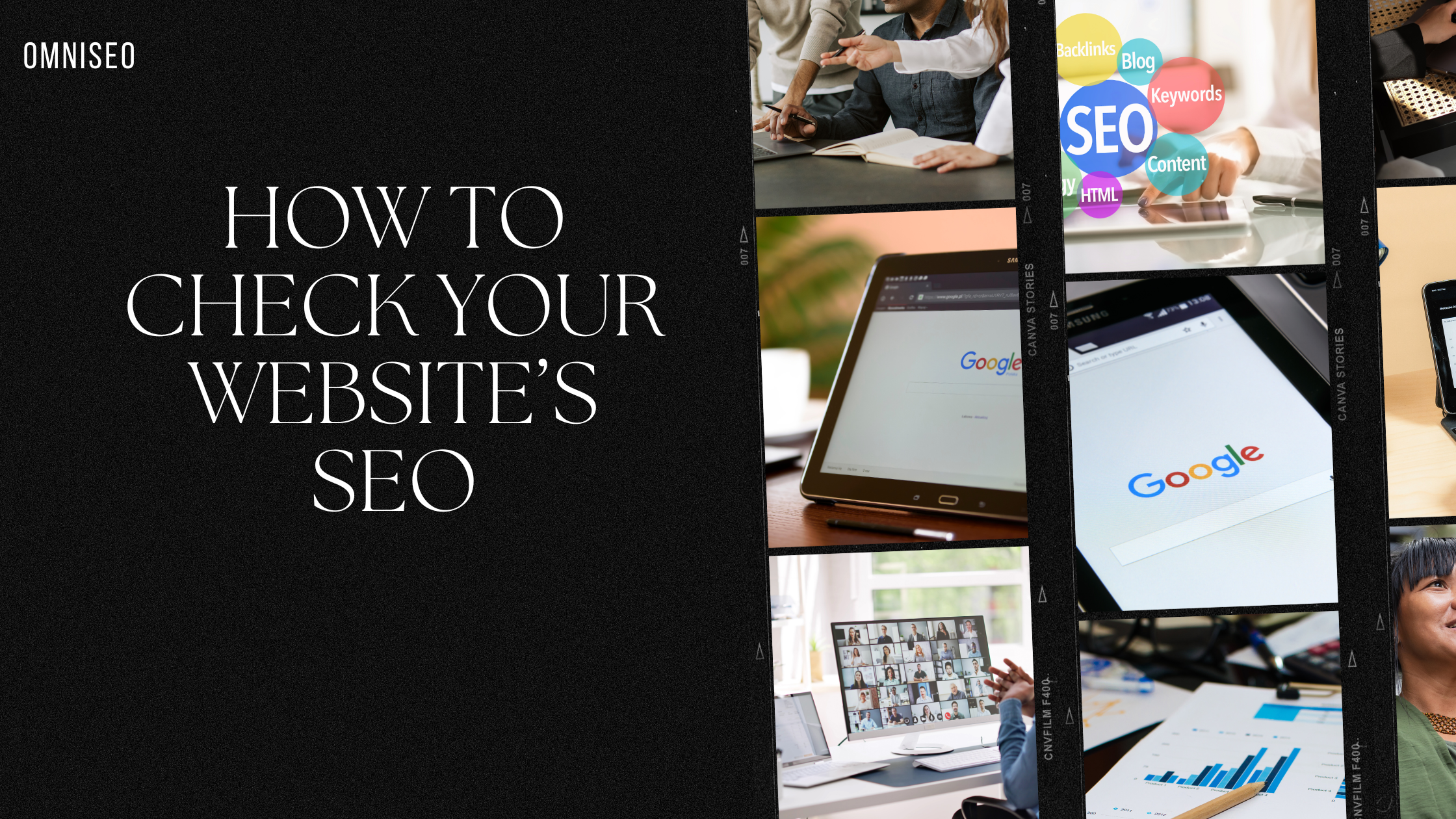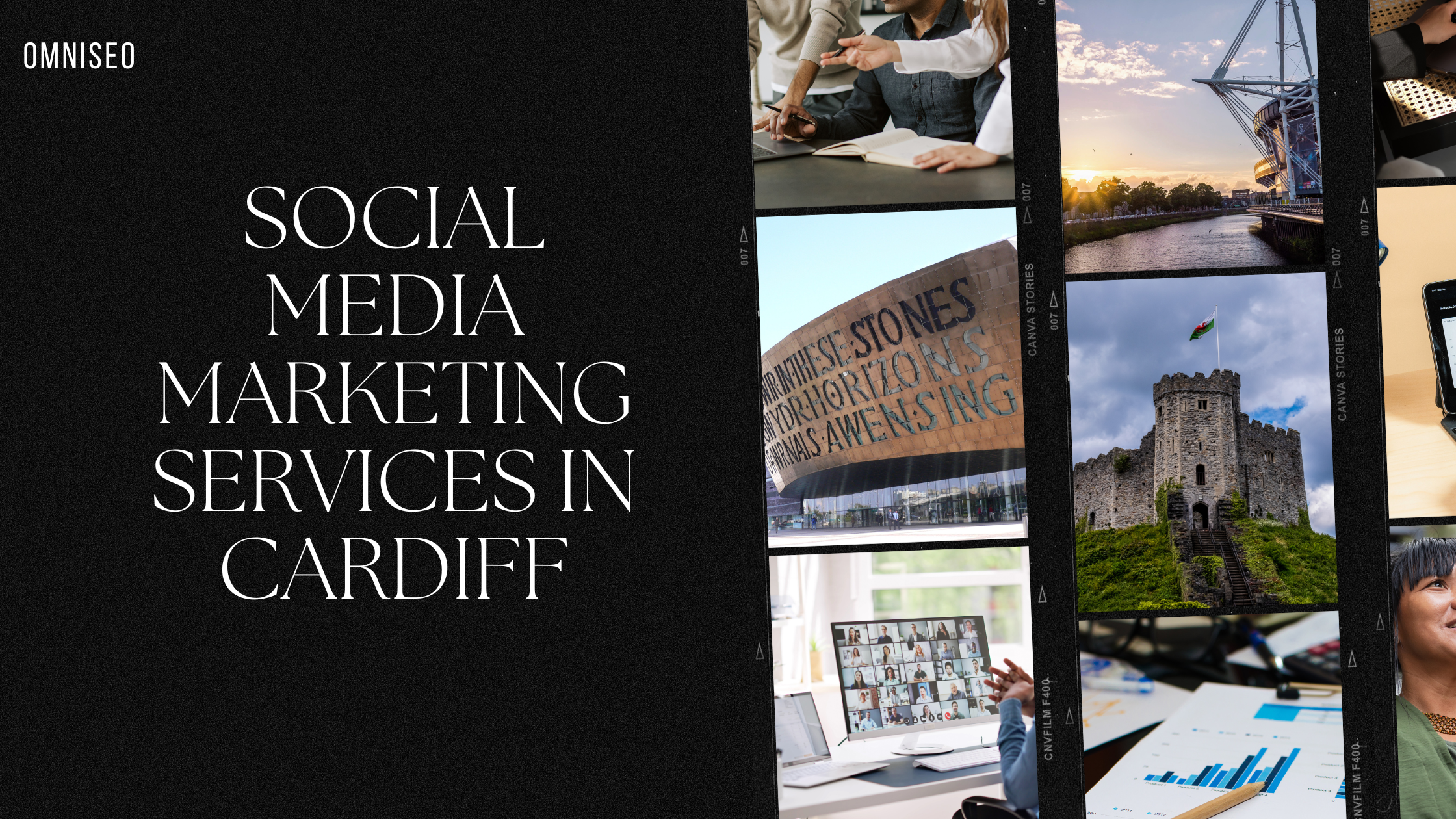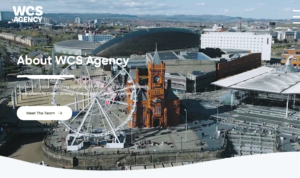How to Stay Productive While Working Remotely in Cardiff
How to Stay Productive While Working Remotely in Cardiff
The shift to remote working in the past few years has revolutionised how we manage our professional lives, offering flexibility and autonomy but also posing distinct challenges to maintaining productivity.
For those working remotely in Cardiff, the lively capital of Wales, there’s a unique mix of opportunities and potential distractions. With its rich heritage, bustling city centre, and proximity to stunning landscapes, Cardiff provides an inspiring setting for remote work—if you can harness its potential effectively.
Today we will explore how you can stay productive while working remotely in Cardiff, offering practical advice, local insights, and strategies tailored to the city’s distinctive environment.
But first, Cardiff is a relatively small city. Is it even a good place to work remotely, or is the whole idea just asking for cabin fever?
Let's take a look:
The Remote Work Landscape in Cardiff
Cardiff has become a hotspot for remote workers, combining urban convenience with a strong community feel. The city’s economy spans tech startups, creative industries, financial services, and public sector roles, many of which have adopted hybrid or fully remote models since the pandemic.
With a population exceeding 360,000 and superb connectivity—thanks to high-speed broadband and transport hubs like Cardiff Central station—remote work is not just viable but flourishing here.
Yet, productivity doesn’t come effortlessly. Distractions such as Cardiff’s vibrant events calendar (think Six Nations rugby or festivals in Bute Park), the lure of a coffee run to St Mary Street, or even the unpredictable Welsh weather can throw you off course. The trick is to create a routine and working environment that capitalise on Cardiff’s strengths while managing its challenges.
First, the most important:
1. Set Up a Dedicated Workspace

A cornerstone of remote productivity is having a space that signals “work mode.” In Cardiff, where homes range from Victorian terraces in Roath to modern flats in Cardiff Bay, your setup will depend on your circumstances. Here’s how to make it work:
- Pick the Right Spot: If possible, dedicate a room or corner to work. A desk by a window overlooking a pleasant, nature-filled view such as the River Taff or Cathays Park can lift your spirits without pulling focus. Steer clear of working from your bed or sofa—those are for unwinding.
- Invest in Ergonomics: A comfy chair and proper desk height are worth the spend. Local shops like IKEA Cardiff (in Grangetown) or online retailers offer budget-friendly options.
- Minimise Distractions: Cardiff’s urban hum—think delivery vans, seagulls and people aggressively trying to sell strawberries—can intrude. Noise-cancelling headphones or a white noise app can help. If you’re near a busy spot like Queen Street, consider soundproofing with rugs or curtains.
Cardiff Tip: If your home setup isn’t up to scratch, try a co-working space like Tramshed Tech in Grangetown or Indycube in the city centre. These offer fast Wi-Fi, quiet areas, and a chance to connect with other remote workers.
2. Establish a Routine Tailored to Cardiff Life

Productivity thrives on structure, but remote work in Cardiff lets you adapt that structure to the city’s rhythm. Here’s how:
- Set Core Hours: Decide when you’re at your sharpest—perhaps 9:00 to 13:00 for focused work, leaving afternoons for meetings or lighter tasks. Align with your team’s timezone if needed, but take advantage of Cardiff’s GMT setting for a balanced day.
- Build in Breaks: Cardiff’s compact size makes stepping out easy. A 15-minute walk to Roath Park or along the Taff Trail can refresh you. Studies show short breaks sharpen focus—ideal for beating the afternoon lull.
- Work with Local Timing: Avoid scheduling calls during rush hour (like 8:00–9:00 around Newport Road) if you’re in a shared space with commuters. Cardiff’s quieter mornings in areas like Pontcanna are perfect for uninterrupted work.
Cardiff Tip: Sync your day with local perks. Grab a coffee from Hard Lines in Canton during a break, or time your lunch for a quick trip to Cardiff Market for fresh Welsh cakes—small treats to keep you going.
3. Master Time Management Techniques
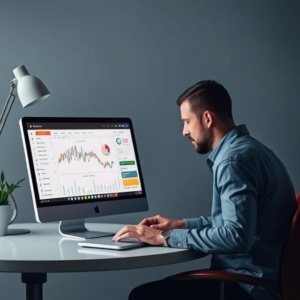
Without an office’s framework, time can slip away. These proven methods, tailored for Cardiff’s remote workers, can keep you on track:
- Pomodoro Technique: Work in 25-minute bursts with 5-minute breaks. After four cycles, take a longer break—perhaps a walk to Llandaff Cathedral if you’re nearby. Apps like Focus Booster make this simple.
- Time Blocking: Reserve specific hours for tasks (e.g., 10:00–11:00 for emails, 13:00–15:00 for projects). Cardiff’s quieter suburbs like Lisvane are ideal for uninterrupted blocks.
- Prioritise with the Eisenhower Matrix: Sort tasks into urgent/important categories. A looming deadline is urgent, while planning a Cardiff team meetup might be important but less pressing.
Cardiff Tip: Use downtime wisely. If you’re waiting on a colleague, draft a blog post or brainstorm while sipping tea at a local gem like Pettigrew Tea Rooms.
4. Stay Connected with Your Team

Remote work can feel isolating, especially if your team isn’t Cardiff-based. Staying engaged keeps you accountable and productive:
- Use Collaboration Tools: Platforms like Slack, Microsoft Teams, or Zoom are staples, but set boundaries—mute notifications after hours to avoid burnout. Cardiff’s reliable broadband (average speeds around 100 Mbps) supports smooth video calls.
- Schedule Check-Ins: A quick morning catch-up with your team can set the tone. If you’re freelancing, join Cardiff’s remote worker meetups (check Meetup.com for groups) to replicate that camaraderie.
- Celebrate Wins: Share successes virtually or, if local, arrange an occasional team outing to a Cardiff spot like Depot for a morale lift.
Cardiff Tip: If you’re hybrid, pop into the office for key meetings. Cardiff’s walkable size means you’re rarely more than 20 minutes from a central hub like Capital Quarter.
5. Leverage Cardiff’s Resources for Focus and Inspiration

Cardiff’s blend of urban and natural spaces can enhance your workday if used smartly:
- Café Work Sessions: When cabin fever strikes, head to spots like Coffee Barker in the Arcades or The Plan in Morgan Quarter. They offer Wi-Fi, great vibes, and a change of scene—just avoid peak lunch hours (12:00–14:00).
- Nature Breaks: Step out to Bute Park or the Cardiff Bay Barrage. Research shows nature cuts stress, sharpening your focus when you return.
- Libraries: Cardiff Central Library on The Hayes is a free, quiet spot with desks and Wi-Fi—perfect for deep work without the café buzz.
6. Maintain Work-Life Balance

Remote work blurs boundaries, but in Cardiff, you can draw the line effectively:
- Set an End Time: Finish at, say, 18:00, and switch off notifications. Use that time to enjoy Cardiff’s nightlife—perhaps a pint at The Botanist or a show at the New Theatre.
- Separate Spaces: If you can, leave your workspace at day’s end. In smaller flats where this isn't practical, pack away your laptop to mentally “leave the office.”
- Exercise: Join a local gym like The Gym Cardiff City Centre, or jog along the Taff Trail. Physical activity counters sedentary habits and boosts energy.
Cardiff Tip: Unwind with a local twist—try a Welsh language class at Chapter Arts Centre or a sunset walk in Penarth (just 10 minutes by train) to recharge.
7. Tackle Common Remote Work Challenges in Cardiff

Every remote worker faces hurdles. Here’s how to handle them locally:
- Distractions: If housemates or Cardiff’s street noise disrupt you, use noise-cancelling tools or relocate to a quieter spot like Roath Library.
- Motivation Dips: Set small goals (e.g., finish a report by midday) and reward yourself with a treat from Cardiff Market. Joining a virtual accountability group can also help.
- Internet Issues: Cardiff’s connectivity is solid, but outages happen. Have a backup—Vodafone’s 5G hotspots or a café with Wi-Fi as a fallback.
- Time Running Away With You: Consider outsourcing certain tasks. Struggling to find time to rank your website and gain clients? Hire a local Cardiff SEO agency.
Cardiff Tip: For tech troubles, visit Currys PC World in Cardiff Bay Retail Park for quick fixes or upgrades.
Tools and Tech to Boost Productivity
The right tools can streamline your day. Here’s a toolkit:
- Task Management: Trello or Asana to track projects. Sync with your team or use solo for personal goals.
- Communication: Slack for chats, Calendly for scheduling.
- Focus Aids: Apps like Forest gamify concentration, while local playlists keep you in the zone.
Cardiff Tip: Buy tech locally from CeX on St Mary Street for affordable gear like monitors or headsets.
Staying productive while working remotely in Cardiff is about blending discipline with the city’s unique offerings. From crafting a workspace in your Cathays terrace to taking breaks by the Bay, you can turn Cardiff’s energy into a productivity asset. Whether you’re a freelancer, startup founder, or corporate employee, these strategies—rooted in local context—will help you succeed. Embrace the flexibility, tap into Cardiff’s resources, and make remote work work for you in this dynamic Welsh capital.
Cardiff’s Most Competitive Industries Online – How to Stand Out
Cardiff’s Most Competitive Industries Online – How to Stand Out
Cardiff, the capital of Wales, is a thriving hub for businesses across multiple industries. With a growing digital economy and increasing online competition, standing out in the digital landscape has become a challenge for many businesses. Whether you run a restaurant, an e-commerce store, or a law firm, establishing a strong online presence is essential for success.
In this article, we’ll explore the most competitive industries in Cardiff’s online market and provide strategic insights on how businesses in these sectors can differentiate themselves. We will also include real-life examples and actionable tips to help businesses stay ahead.
The Most Competitive Industries in Cardiff’s Online Market
1. Hospitality & Tourism
Why It’s Competitive:
Cardiff is a popular tourist destination, attracting millions of visitors every year. With a booming hospitality sector that includes hotels, restaurants, and attractions, businesses must compete for online visibility. The rise of online travel agencies, review platforms, and social media influencers has made it even more challenging to stand out.
How to Stand Out:
- SEO-Optimised Content: Regularly update your website with travel guides, local event blogs, and keyword-optimised landing pages.
- Google Business Profile Optimisation: Ensure your GBP listing is fully optimised with high-quality images, up-to-date contact details, and positive customer reviews.
- Local SEO: Use location-specific keywords such as “best hotel in Cardiff city centre” or “top restaurants near Cardiff Bay.”
- Influencer & Blogger Collaborations: Partner with travel bloggers and food influencers to create buzz and attract visitors.
- User-Generated Content: Encourage guests to share their experiences on Instagram and TikTok using a branded hashtag.
- Email Marketing for Repeat Bookings: Build a customer email list and offer discounts for return visitors.
- Exclusive Online Offers: Provide special discounts for direct bookings to compete with OTAs like Booking.com.
2. Real Estate & Property Management
Why It’s Competitive:
With Cardiff experiencing ongoing property development and a strong rental market, estate agents, property developers, and mortgage brokers all battle for prime online visibility. Online property portals like Rightmove and Zoopla dominate search rankings, making it difficult for independent agencies to get noticed.
How to Stand Out:
- High-Quality Video Content: Create virtual property tours and share them on social media and your website.
- Local SEO & Schema Markup: Optimise listings with rich snippets, structured data, and localised content.
- User-Generated Content: Encourage satisfied buyers and tenants to leave reviews and share their experiences.
- Community Engagement: Get involved in local forums and Facebook groups to build authority and trust.
- Blogging & Market Insights: Share insights on Cardiff’s housing trends, property investment tips, and neighbourhood guides.
- Social Media Lead Generation: Use Facebook Ads targeting potential buyers and renters in Cardiff.
3. Legal Services & Law Firms
Why It’s Competitive:
Law firms in Cardiff must navigate an oversaturated digital market, with many firms competing for clients in family law, personal injury, and corporate law. Legal services are highly competitive because they involve high-value keywords, leading to expensive PPC advertising.
How to Stand Out:
- Niche-Specific Landing Pages: Create pages dedicated to specific legal services, such as “Cardiff Divorce Lawyers” or “Best Employment Lawyers in Cardiff.”
- Client Testimonials & Case Studies: Showcase success stories to build credibility.
- Content Marketing: Publish informative blogs on common legal issues and changes in the law.
- Google Ads & Retargeting: Invest in PPC campaigns to capture high-intent search traffic.
- Video Content & Webinars: Offer free legal advice through live Q&A sessions on LinkedIn and YouTube.
- Interactive Chat & Free Consultations: Provide website visitors with live chat support and free case evaluations.
4. E-commerce & Retail
Why It’s Competitive:
With the growth of online shopping, Cardiff-based e-commerce businesses must compete with both local retailers and global giants like Amazon. Consumers expect fast shipping, personalised recommendations, and seamless mobile experiences.
How to Stand Out:
- SEO-Optimised Product Pages: Use keyword-rich product descriptions and high-quality images.
- Social Media Advertising: Leverage Instagram and Facebook ads for targeted promotions.
- Customer Loyalty Programs: Implement rewards programs to encourage repeat purchases.
- Live Chat & AI Chatbots: Improve customer service by offering instant support.
- Local SEO for Click-and-Collect: Optimise for searches like “same-day delivery in Cardiff” or “Cardiff gift shops near me.”
- Influencer Collaborations: Partner with local influencers to promote products through reviews and giveaways.
General Digital Marketing Strategies to Stand Out
1. Invest in Local SEO
For Cardiff-based businesses, ranking in local search results is crucial. Optimising Google My Business, obtaining local backlinks, and using Cardiff-specific keywords can improve local rankings. Working with a highly regarded Cardiff SEO agency is one of the best steps you can take for making potential customers from the local area aware of your business.
2. Leverage Social Media Marketing
From Instagram to LinkedIn, businesses must maintain active and engaging social media profiles. Paid ads, organic content, and influencer partnerships can drive targeted traffic.
3. Content Marketing & Blogging
Providing valuable content establishes authority. Blogging about industry trends, customer pain points, and Cardiff-related topics can boost engagement and SEO rankings.
4. Utilise Paid Advertising (PPC & Social Ads)
Google Ads, Facebook Ads, and retargeting campaigns can help businesses reach their ideal audience quickly. Investing in the right PPC strategies ensures a high return on investment.
5. Optimise for Mobile & User Experience
A fast, mobile-friendly website with seamless navigation enhances user experience and improves search rankings.
6. Encourage Online Reviews & Reputation Management
Customer reviews impact credibility and local search rankings. Encourage satisfied clients to leave positive feedback on Google, Facebook, and Trustpilot.
7. Implement Email Marketing & CRM Strategies
Building an email list and sending personalised offers help retain customers and increase conversions.
Cardiff’s online market is highly competitive across various industries, from hospitality to legal services and e-commerce. Businesses must leverage SEO, content marketing, social media, and paid advertising to stand out. By implementing these strategies, companies can build strong digital footprints and thrive in Cardiff’s ever-evolving online landscape.
If you’re looking to improve your digital presence in Cardiff, investing in a comprehensive SEO and digital marketing strategy is key. Consider getting in touch with omniSEO to get a free action plan to learn more about how to grow your business online.
How Backlinks Are Important for SEO
In the ever-evolving world of SEO (Search Engine Optimisation), understanding the factors that influence search rankings is crucial for any business looking to improve its visibility on search engines.
Among the many elements that play a role in SEO, backlinks stand out as one of, if not the most significant.
But what exactly are backlinks, and why are they so essential to SEO?
Today we’re going in depth on the topic, from the basics for those who are new to the idea, all the way to unique strategies we’ve developed from years of working with clients of all types.
We’ll dive into the importance of backlinks for SEO, how they affect rankings, and the best strategies for acquiring high-quality backlinks to boost your website's performance.
But first, what is a backlink?
What Are Backlinks?

Backlinks, often referred to as "inbound links" or "incoming links," are links from one website to another. These links serve as a vote of confidence from one site to another, signaling to search engines that the content on the linked website is valuable, credible, and worth referencing.
In simpler terms, when a website links to another site, it’s essentially saying, “This content is useful, trustworthy, and relevant.” The more authoritative websites that link to your content, the more search engines like Google see your website as trustworthy, which can lead to improved rankings in search results.
Backlinks are an essential part of search engine algorithms, particularly Google’s PageRank algorithm, which was initially developed to measure the importance of web pages. The more backlinks a page has, especially from high-quality sources, the more likely it is to rank higher in search engine results pages (SERPs).
Why Are Backlinks Important for SEO?
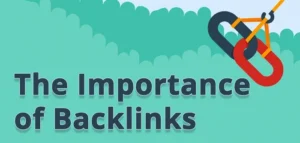
Backlinks are crucial for SEO for several reasons:
- Improved Search Engine Rankings Google and other search engines use backlinks as one of the primary ranking factors. Backlinks act as signals that a webpage is credible and authoritative, which directly impacts search engine rankings. If a page has several high-quality backlinks from reputable sites, it is more likely to appear higher in the SERPs.
- Increased Organic Traffic Backlinks can directly lead to more traffic. When a reputable website links to your content, it sends visitors from that site to yours. If the link is placed strategically and within a relevant context, it can generate significant referral traffic, boosting your site's visibility and user engagement. Of course, more importantly, increased rankings in search engines directly translate into increased traffic too, since the vast majority of people browsing search engine results pages only click onto one of the first few results.
- Faster Indexing by Search Engines When search engines crawl websites to index content, backlinks can play a vital role in helping new pages get discovered more quickly. If a new page is linked to from an already well-established page, search engine crawlers are more likely to find it and index it sooner.
- Building Trust and Credibility Backlinks from authoritative sources serve as a form of endorsement. They are like a stamp of approval from other reputable websites, signalling to both users and search engines that your content is valuable and trustworthy. This credibility can result in more backlinks and higher rankings, creating a positive feedback loop.
- Improved Domain Authority (DA) Domain Authority (DA) is a metric used to predict a website's ability to rank on search engines. Backlinks contribute directly to increasing a site’s DA, especially those from high-authority websites. A higher DA will improve the likelihood of ranking for competitive keywords and topics.
How Do Backlinks Influence Search Engine Rankings?
Search engines use backlinks as a major ranking factor for several reasons. Understanding how backlinks affect rankings requires a closer look at how search engines evaluate links:
- Link Quality Over Quantity It’s not just about the number of backlinks a page has; it’s about the quality of those links. Search engines prioritise backlinks from authoritative, trustworthy, and relevant sources. A single backlink from a high-quality site (such as a well-known news outlet, government website, or industry leader) can be more valuable than hundreds of low-quality links from irrelevant or spammy sources.
- Anchor Text Relevance Anchor text is the clickable text within a hyperlink. Search engines use anchor text as a signal to understand what the linked page is about. Optimising anchor text for relevant keywords can enhance the SEO value of a backlink. However, over-optimisation or keyword stuffing can lead to penalties.
- Follow vs. Nofollow Links Not all backlinks are created equal. A “follow” backlink is one that passes link equity (or “link juice”) to the linked page, helping improve its rankings. On the other hand, a “nofollow” link has a rel="nofollow" attribute, which tells search engines not to pass any link equity. While nofollow links don’t directly affect rankings, they can still bring traffic and contribute to a natural link profile.
- Link Context and Relevance Backlinks are more valuable when they come from content that is relevant to the target page. For example, a backlink from a reputable health website linking to an article on fitness will have more SEO value than a link from an unrelated industry, like technology. Relevance signals to search engines that the content being linked to is important for users searching for specific topics.
- Link Diversity Having backlinks from a variety of sources – such as blogs, news sites, forums, and social media platforms – helps to create a natural link profile. Search engines tend to favor websites with diverse link profiles, as this suggests that the content is being shared and referenced across different parts of the web.
The Role of Backlinks in Google’s Algorithm
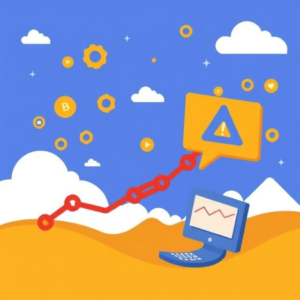
Google’s algorithm uses backlinks to determine the relevance and authority of a webpage. While it is just one ranking factor among many, backlinks are one of the most influential signals. The Google PageRank algorithm, which was initially introduced in 1998, famously used backlinks as a way to measure a webpage’s importance based on how many other pages linked to it. Although PageRank has evolved and is no longer used in its original form, backlinks continue to play a significant role in modern SEO.
Additionally, Google evaluates several factors surrounding backlinks, including the quality of the linking site, the relevance of the linked content, and the overall naturalness of the link profile. Websites with high-quality, natural backlinks are more likely to rank higher on Google compared to those with spammy or unnatural link-building practices.
How to Build High-Quality Backlinks
Acquiring backlinks, especially high-quality ones, can be challenging. However, with the right strategies, you can build a strong backlink profile that will benefit your SEO efforts. Here are some methods for acquiring quality backlinks:
- Create High-Quality, Link-Worthy Content The first step in earning backlinks is to create valuable, high-quality content that other websites want to link to. This could include in-depth guides, data-driven studies, infographics, or unique insights that are relevant to your audience and industry. Content that answers questions, solves problems, or provides fresh perspectives is more likely to attract backlinks.
- Guest Blogging Guest blogging is a popular strategy for acquiring backlinks. By writing articles for reputable websites in your industry, you can earn backlinks to your own site. It’s important to target websites that have a good reputation and a relevant audience, as this will not only improve your backlink profile but also bring referral traffic.
- Broken Link Building Broken link building is a strategy where you find broken or dead links on authoritative websites and offer your content as a replacement. This benefits the website owner by helping them fix broken links, while you get the chance to earn a valuable backlink.
- Outreach and Link Requests Building relationships with other website owners and influencers in your industry can open the door for backlink opportunities. Reaching out to websites with relevant content and asking for backlinks can be effective if done respectfully. Make sure to personalise your outreach messages and provide clear value in your request.
- Leveraging Social Media Social media platforms can help spread your content, leading to organic backlinks. When you share your content across social media channels, you increase the chances of others discovering it and linking back to it.
- Utilising Content Directories and Listings Submitting your website to reputable directories or industry-specific listings can provide backlinks that may boost your SEO efforts. However, avoid low-quality directories that might harm your site's reputation.
The Risks of Poor-Quality Backlinks
While backlinks are important for SEO, not all backlinks are beneficial. Low-quality or spammy backlinks can negatively impact your rankings. Some risks associated with poor-quality backlinks include:
- Penalties from Google Google has strict guidelines about backlink practices. If you acquire backlinks through black-hat SEO techniques, such as buying links or using link farms, your site could face penalties or even be removed from search results altogether.
- Toxic Link Profiles A website with a large number of low-quality, irrelevant, or spammy backlinks will develop a toxic link profile. This can cause a drop in rankings or deindexation by search engines.
- Link Schemes Participating in link schemes, such as reciprocal linking or link exchanges, can result in penalties. It’s essential to focus on earning natural, editorial backlinks rather than engaging in manipulative link-building tactics.
The Evolution of Backlinks in SEO
Backlinks have been a part of SEO since the very beginning. Google’s PageRank algorithm, introduced in the late 1990s, revolutionised the way search engines ranked websites. At its core, PageRank was based on the idea that links between websites were like votes of confidence — the more votes (backlinks) a page received, the more important it was in the eyes of Google.
However, over the years, the role of backlinks in SEO has evolved significantly. In the early days of SEO, it was common for websites to focus solely on accumulating as many backlinks as possible, without paying much attention to the quality of those links. This led to a range of black-hat SEO tactics such as link farms, paid links, and excessive link exchanges.
In response, Google began refining its algorithm to recognise the difference between quality and quantity. The introduction of Google Penguin in 2012 marked a major turning point in the way backlinks were evaluated. Penguin penalised websites that used manipulative link-building practices, such as acquiring low-quality or spammy backlinks, and placed greater emphasis on high-quality, natural links. As a result, the focus of modern SEO has shifted toward earning backlinks through valuable content and ethical outreach strategies.
Today, backlinks remain a crucial ranking factor, but the algorithms have become far more sophisticated. Google now assesses backlinks based on a variety of factors, including relevance, authority, and trustworthiness. As SEO continues to evolve, backlinks will remain a cornerstone of any successful SEO strategy, but only when acquired through proper, white-hat techniques.
How Backlinks Impact Different Aspects of SEO
While backlinks are universally important for SEO, their impact can vary depending on the type of website and the SEO goals. Let’s break down how backlinks affect different types of SEO:
1. Local SEO

For local SEO, backlinks from local sources are particularly valuable. Local backlinks signal to search engines that your website is relevant to a particular geographic area. This is important for businesses that serve specific locations, such as restaurants, law firms, or healthcare providers.
For example, a backlink from a local newspaper or business association’s website can significantly boost your local rankings in Google. Additionally, getting listed in local directories like Yelp, Google My Business, and local Chamber of Commerce sites can improve local SEO performance.
Local backlinks not only help with rankings but can also drive targeted, relevant traffic to your site. When a local consumer clicks on a link to your website from a local business blog or directory, they are more likely to convert, resulting in higher engagement and ultimately higher ROI for your business.
2. E-commerce SEO

In the case of e-commerce websites, backlinks can contribute significantly to overall visibility, especially when ranking for competitive product categories. Backlinks help e-commerce sites rank not just for branded terms, but also for broad product keywords, such as "best running shoes" or "eco-friendly kitchenware."
For e-commerce websites, it’s also important to acquire backlinks to category and product pages. For example, a backlink from a reputable fashion blogger to a product page or a product roundup can increase both search visibility and referral traffic. Additionally, backlinks from relevant product reviews, news articles, or influencer partnerships are an effective way to boost e-commerce SEO.
3. Content Marketing

Backlinks are one of the main drivers of content marketing success. When your content is shared and linked to by others, it gains more authority and reaches a broader audience. Creating shareable, valuable content (such as guides, research, and infographics) that naturally attracts backlinks is an effective content marketing strategy.
The more quality backlinks your content receives, the more likely it is to rank well for target keywords. Additionally, each backlink is an opportunity for direct referral traffic from the referring site. This is particularly useful when you can build relationships with influencers and thought leaders in your niche to promote your content.
4. Blog and News Websites
For blog and news websites, backlinks are integral to content discoverability and ranking. When a popular website or news outlet links to a blog post, it increases the post’s chances of ranking higher in Google. News websites often benefit from backlinks to time-sensitive content, such as breaking news or trend articles.
Similarly, niche blogs that are linked to by other well-established blogs or forums benefit from an expanded audience and higher credibility. Backlinks in this case not only boost rankings but also contribute to long-term traffic growth by establishing the site as a trusted source within a particular field.
Best Tools for Backlink Analysis
A vital part of managing your backlink strategy is analysing the backlinks you have and discovering new opportunities. Here are some of the best tools for backlink analysis:
1. Ahrefs
Ahrefs is one of the most powerful tools for backlink analysis. It provides detailed insights into your backlink profile, including the number of backlinks, referring domains, anchor text, and more. You can also use Ahrefs to track the backlinks of your competitors, identify broken links, and find new opportunities for link-building.
2. SEMrush
SEMrush is another excellent tool for backlink analysis. It helps you monitor your backlinks, evaluate their quality, and track your competitors’ backlink profiles. With SEMrush, you can also explore link-building opportunities and analyse how backlinks are affecting your rankings.
3. Moz Link Explorer
Moz’s Link Explorer is a user-friendly tool that provides in-depth backlink data, including metrics like Domain Authority (DA) and Page Authority (PA). Moz is known for its link-building guides and offers various reports to help users understand their link profile and plan their SEO strategies effectively.
4. Majestic SEO
Majestic SEO is a specialised backlink analysis tool that provides a comprehensive view of backlinks. It has two main metrics: Trust Flow and Citation Flow, which measure the quality and quantity of backlinks, respectively. Majestic is great for analysing backlinks at scale and finding high-authority link-building opportunities.
5. Google Search Console
Google Search Console (GSC) is a free tool that provides valuable data about the backlinks pointing to your website. While it doesn’t offer as many in-depth features as the premium tools above, GSC is a great starting point for understanding your backlink profile and identifying potential issues.
Common Backlinking Mistakes to Avoid
While backlinks are critical for SEO success, there are several common mistakes that can hurt your website’s rankings. Here are some to watch out for:
1. Over-Optimisation of Anchor Text
Anchor text is a key factor in how search engines interpret backlinks. However, over-optimisation of anchor text (i.e., using the same keyword-rich text repeatedly) can lead to penalties from Google. Instead, focus on using natural, varied anchor text that accurately describes the content being linked to.
2. Acquiring Low-Quality or Spammy Backlinks
Buying backlinks or participating in link farms is a dangerous practice that can lead to penalties from Google. It’s important to focus on earning backlinks naturally through high-quality content and outreach. If you acquire backlinks from irrelevant, low-authority, or spammy websites, you risk harming your SEO efforts.
3. Ignoring Link Diversity
Having a diverse backlink profile is crucial for SEO. Relying too heavily on backlinks from a single source or domain type can appear unnatural to search engines. Aim for a balanced mix of backlinks from various sources, such as blogs, news sites, forums, and directories, to build a natural profile.
4. Focusing Too Much on Quantity Over Quality
While acquiring a large number of backlinks might seem appealing, quality is far more important than quantity. A few high-quality backlinks from authoritative sources are far more beneficial than hundreds of low-quality links. Focus on building relationships and earning backlinks that offer real value.
Backlinks remain one of the most influential factors in SEO. They are essential for increasing your site’s authority, improving rankings, and driving referral traffic. However, the process of acquiring backlinks should be approached with care and focus on quality over quantity. By consistently creating valuable content, building relationships, and avoiding black-hat practices, you can develop a strong backlink profile that will help your website thrive in the long term.
If you would rather spend your time on running your day to day business, and allow experienced backlink specialists to do this for you, consider getting in touch with omniSEO, the leading Cardiff SEO agency. We have carried out high quality backlink campaigns for hundreds of clients, from local shops to major national chains.
Consider getting a free SEO gameplan by filling in this form to request a free call about your site and the best next steps you can take.
How to Create a Topical Map for SEO
How to Create a Topical Map for SEO
In the world of SEO (Search Engine Optimisation), ranking high on search engines isn’t just about using the right keywords. It’s about creating content that satisfies user intent, provides real value, and is structured in a way that search engines understand. One of the most powerful ways to achieve this is by building a topical map.
A topical map, also known as a topic cluster model, helps you organise content in a logical and effective way that boosts your SEO strategy. By clustering related content around a central theme, you not only make your site easier to navigate, but you also signal to search engines that your content is authoritative on a particular subject.
Before we break down how to build one, let's go a bit further into why you should:
What is a Topical Map?
At its core, a topical map is a strategic way to organise content around a main topic and its subtopics. The main topic (often called a “pillar topic”) serves as the cornerstone content for a specific subject area, and the subtopics (referred to as “cluster content”) are detailed pieces of content that link back to the pillar page.
Here’s a breakdown of the basic components of a topical map:
- Pillar Page: A comprehensive, authoritative page that covers a broad topic in general terms.
- Cluster Pages: More specific, in-depth articles that address particular aspects or questions related to the pillar topic.
- Internal Linking: A well-structured linking system between the pillar and cluster pages, which helps Google understand the relationship between the content and increases the chances of ranking for related keywords.
The idea is simple: rather than publishing random articles on various topics, you create a clear structure that makes it easier for both users and search engines to navigate. When done right, this approach helps you rank for a wider variety of keywords, improves user experience, and strengthens your website's overall authority in a given niche.
Why You Should Use a Topical Map for SEO
There are several reasons why implementing a topical map can significantly improve your SEO efforts:
-
Improves Site Architecture and Navigation
With a topical map, you create a clear, logical structure for your content. When users can easily find what they’re looking for, they spend more time on your website, reducing bounce rates and increasing engagement. -
Strengthens Content Authority
A topical map helps you build authority around a subject. By clustering related content together, Google recognises that your site is a comprehensive resource for a specific topic, which can improve rankings for both the main keyword and its related terms. -
Boosts Organic Traffic
By targeting a variety of related keywords across your pillar and cluster pages, you’re increasing the chances of ranking for a range of search queries, ultimately boosting organic traffic. -
Enhances Internal Linking Strategy
Internal links are crucial for SEO. A topical map creates a natural and organised internal linking structure, which helps Google understand the relationship between different pages and improves overall crawlability. -
Improves User Experience
When your content is organised in a clear and logical way, visitors are more likely to stay on your website longer, explore other articles, and come back for more.
How to Create a Topical Map for SEO: A Step-by-Step Guide

Now that you understand the benefits of creating a topical map, let’s dive into how to create one. Follow these steps to craft an effective topical map that enhances both your SEO and user experience.
1. Choose a Broad Pillar Topic
The first step is identifying a broad topic that you want your site to rank for. This should be a subject that is relevant to your audience and has a substantial search volume. Ideally, the topic should also be closely related to your business or brand.
For example, let’s say you run a website about fitness. A good pillar topic might be "Fitness and Health" or "Weight Loss." This topic should be broad enough to encompass many subtopics but specific enough to target a defined audience.
2. Research and Identify Subtopics
Once you’ve chosen your pillar topic, the next step is to identify the subtopics that will make up your content clusters. These subtopics should be related to the main pillar topic but focus on specific aspects, questions, or issues that your target audience is searching for.
You can use tools like Google Keyword Planner, SEMrush, Ahrefs, or AnswerThePublic to research subtopics. These tools will help you find long-tail keywords and questions that are commonly searched by users in relation to your pillar topic.
For example, using the “Fitness and Health” pillar topic, you might discover subtopics such as:
- "Healthy Eating for Weight Loss"
- "How to Create a Workout Plan"
- "Best Cardio Exercises for Beginners"
- "Yoga for Stress Relief"
These are all potential cluster topics that can be used to create more detailed, targeted content.
3. Create High-Quality Content for Cluster Pages
For each subtopic, create high-quality, in-depth content that answers specific questions or provides valuable insights. The goal is to make these cluster pages comprehensive enough to serve as standalone resources, while still linking back to the pillar page for additional context.
For example, the "Healthy Eating for Weight Loss" page might include information on diet plans, healthy recipes, and tips for sustainable weight loss. It should cover the topic in detail, while also linking back to the pillar page on "Fitness and Health" to help users dive deeper into the broader subject.
4. Build Internal Links Between Pillar and Cluster Pages
The next critical step is internal linking. Every cluster page should link back to the pillar page, and vice versa. This creates a solid structure that helps search engines understand the relationship between your pages.
In our example, the "Healthy Eating for Weight Loss" page should include links to the pillar page ("Fitness and Health") and possibly other related cluster pages, such as "How to Create a Workout Plan."
You can also link from the pillar page to the cluster pages. This helps establish a hierarchy and strengthens the SEO value of both the pillar and cluster pages.
5. Optimise for SEO
As you create each page, make sure to optimise for SEO. This means:
- Using Target Keywords: Include your primary keywords in titles, headers, meta descriptions, and throughout the content.
- Writing Engaging Content: Keep your content relevant, informative, and engaging for your audience.
- Including Multimedia: Use images, videos, infographics, or other media to make your content more engaging and informative.
- Ensuring Mobile-Friendliness: Make sure your website is mobile-optimised since search engines prioritise mobile-friendly sites.
- Adding Meta Tags and Descriptions: Add relevant meta descriptions, alt texts for images, and structured data where appropriate to help search engines understand your content.
6. Track and Measure Results
After creating your topical map, it’s important to track its performance. Use Google Analytics, Google Search Console, or other SEO tools to monitor how your pillar and cluster pages are ranking. Look at metrics like:
- Organic traffic to each page
- Keyword rankings
- Bounce rates
- Average session duration
This data will help you identify which parts of your topical map are performing well and which need improvement.
7. Update and Expand Your Map
SEO is an ongoing process, so don’t stop after creating your topical map. Regularly update your content to keep it fresh and relevant. As new trends or questions emerge in your niche, consider adding new subtopics to your cluster pages or even creating new pillar pages.
Best Practices for Creating a Topical Map
- Focus on User Intent: When creating content for your pillar and cluster pages, make sure you’re addressing the questions and needs of your target audience.
- Use Clear and Simple Navigation: Organise your website so that visitors can easily navigate between the pillar and cluster pages.
- Prioritise Quality Over Quantity: Don’t create content for the sake of content. Each page should provide real value and answer specific questions.
- Be Consistent: Use a consistent structure for your pillar and cluster pages so users can easily understand how to find the information they need.
Creating a topical map for SEO is a strategic way to improve your website’s content structure, enhance user experience, and increase your chances of ranking high on search engines. By focusing on a pillar topic and surrounding it with well-researched cluster topics, you’ll create an organised, authoritative content strategy that benefits both your audience and your SEO goals.
Remember, building a successful topical map takes time, research, and consistent effort. But once implemented, it can be one of the most effective ways to boost your site’s visibility, attract more organic traffic, and become a trusted resource in your industry. Start building your topical map today and watch your SEO results soar!
How to Check Website SEO: A Simple Guide for Website Owners
How to Check Website SEO: A Comprehensive Guide for Website Owners
In today’s digital age, having a website is not enough. To stand out and attract the right audience, your website needs to be optimised for search engines.
Search Engine Optimisation (SEO) is a crucial aspect of digital marketing that ensures your website ranks higher in search engine results pages (SERPs), making it easier for users to find you.
But how do you know if your website is performing well from an SEO standpoint? Today we’ll explore various ways you can check your website’s SEO health, review the best tools for the job, and maybe even provide a few sneaky tips you won't find anywhere else.
But first, let's start with why this matters at all:
Why SEO Matters
Before we dive into how to check your website's SEO, it's important to understand why SEO matters in the first place. SEO is the process of improving your website's visibility in search engines like Google, Bing, and Yahoo. The higher your website ranks on the search engine results pages (SERPs), the more likely people are to visit it. SEO involves multiple factors, including the quality of your content, website structure, backlinks, keywords, mobile-friendliness, and site speed.
If you neglect SEO, your website might struggle to show up in search results, leading to lower organic traffic and fewer opportunities for conversions. Regularly checking and improving your website's SEO ensures you're reaching the right audience and achieving your business goals.
What to Check for When Reviewing Your Website’s SEO
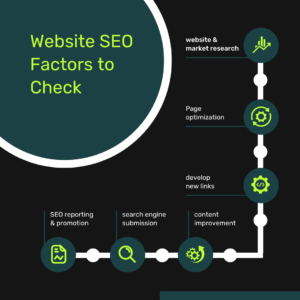
When evaluating your website’s SEO, several factors come into play. These are the elements search engines prioritise when ranking websites. Let’s break down the key SEO elements you should regularly review:
On-Page SEO
On-page SEO refers to the aspects of your website that you can control directly. This includes:
-
Title Tags and Meta Descriptions: Title tags are HTML elements that specify the title of a web page. A well-written title tag helps search engines understand the content of your page. Similarly, meta descriptions provide brief summaries of page content, helping users decide whether to click on your page in search results.
-
Headings and Subheadings: Headings (H1, H2, etc.) help break up content and make it more readable. They also allow search engines to understand the structure of your content.
-
Content Quality: Your content should be relevant, informative, and optimised for the keywords that users are likely searching for. Make sure your content addresses user intent and provides real value.
-
Internal Linking: Linking to other pages on your website helps users navigate your site and improves the flow of link equity throughout your site, boosting your SEO.
-
Keyword Usage: Effective keyword usage is essential for on-page optimisation. Keywords should be naturally integrated into the content, headers, and meta tags.
-
Image Optimisation: Use descriptive file names and alt text for images to ensure search engines can interpret them correctly. Optimised images can also improve page load speed.
Off-Page SEO
Off-page SEO involves activities done outside of your website to improve its ranking. The key factor here is backlinks, which are links from other websites that direct users to your site. High-quality backlinks signal to search engines that your website is trustworthy and authoritative. You should regularly assess your backlink profile using tools like Google Search Console or Ahrefs.
Technical SEO
Technical SEO refers to the behind-the-scenes factors that affect how search engines crawl and index your website. Some of the most important technical SEO elements to check include:
-
Mobile Friendliness: With the rise of mobile devices, Google uses mobile-first indexing, meaning the mobile version of your site is prioritised for ranking purposes. Use Google’s Mobile-Friendly Test to see how well your site performs on mobile devices.
-
Page Speed: A slow-loading website can lead to higher bounce rates and lower rankings. Use tools like Google PageSpeed Insights to assess how fast your website loads and get recommendations for improvement.
-
URL Structure: URLs should be short, descriptive, and contain relevant keywords. Avoid long, complex URLs with unnecessary characters.
-
Sitemap and Robots.txt: A sitemap helps search engines crawl and index your website effectively, while a robots.txt file instructs search engines on which pages they can or cannot crawl.
-
SSL Certificate: Websites with HTTPS encryption are considered more secure and are given priority by search engines. Ensure your website has an SSL certificate to improve both security and SEO.
-
Structured Data Markup: Adding structured data (also known as schema markup) helps search engines better understand the content on your website, which can improve your visibility in rich snippets and featured results.
User Experience (UX)
User experience (UX) is increasingly becoming a ranking factor in SEO. Google wants to prioritise websites that offer a positive user experience, which includes:
-
Navigation and Structure: A well-organised website with clear navigation helps users find what they’re looking for quickly.
-
Bounce Rate and Time on Site: High bounce rates or low time on site might indicate that users aren't finding your content useful. This can negatively impact your SEO.
-
Engagement: Encourage users to engage with your content by using call-to-actions (CTAs), multimedia, and compelling content that holds their attention.
The Best SEO Tools to Check Your Website’s SEO
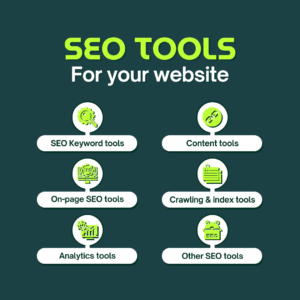
Checking your website’s SEO manually can be time-consuming and complex. Thankfully, there are a number of tools available that can help you streamline the process. Here are some of the best SEO tools for analysing your website:
Google Search Console
Google Search Console is a must-have tool for website owners. It provides invaluable data on how your website is performing in Google search, including impressions, clicks, and average position. It also helps you track indexing issues, crawl errors, and backlink performance. By regularly reviewing your Google Search Console account, you can stay on top of technical SEO problems and address them promptly.
Google Analytics
Google Analytics is another essential tool for measuring website performance. While it doesn't provide direct SEO insights, it gives you an overview of user behaviour, including traffic sources, bounce rates, and conversion rates. This information is crucial for evaluating how your SEO efforts are impacting user engagement and conversions.
SEMrush
SEMrush is a comprehensive SEO tool that provides insights into your website’s SEO performance, keyword rankings, backlink profile, and more. It also offers competitive analysis, allowing you to track how your website compares to competitors in your niche. SEMrush’s Site Audit tool is particularly useful for identifying on-page and technical SEO issues.
Ahrefs
Ahrefs is widely regarded as one of the most powerful SEO tools on the market. It offers an in-depth backlink analysis, keyword research, content analysis, and competitor research. The Site Audit feature can help identify technical issues, while the Rank Tracker allows you to monitor your keyword rankings over time.
Yoast SEO (For WordPress Sites)
If you're using WordPress, the Yoast SEO plugin is a must-have. It helps optimise your on-page SEO by providing real-time analysis of your content, meta descriptions, and keyword usage. Yoast also generates an XML sitemap and integrates with Google Search Console for easier site management.
Moz Pro
Moz Pro is another great tool for tracking your website's SEO performance. It offers a range of features, including keyword tracking, site audits, and backlink analysis. The MozBar, a browser extension, allows you to quickly view important SEO metrics on any webpage.
Screaming Frog
Screaming Frog is a website crawler that can help you identify technical SEO issues on your website, such as broken links, missing meta descriptions, duplicate content, and more. It's particularly useful for large websites with hundreds or thousands of pages.
How OmniSEO Can Help Your Website Rank Higher
While checking your website’s SEO is an essential step in improving its performance, SEO can be a complex and time-consuming process. That’s where omniSEO, one of the leading SEO agencies in Cardiff, can help. With years of experience helping businesses achieve significant SEO results, omniSEO has built a reputation for delivering tailored SEO strategies that drive real, measurable results.
Whether you're a local business in Cardiff or a national or global brand, omniSEO's team of experts can analyse your website’s SEO health, identify areas for improvement, and implement strategies that will boost your rankings, drive more traffic, and increase conversions.
OmniSEO Offers a Free SEO Game Plan
If you’re unsure where to start or how to improve your website’s SEO, omniSEO offers a free SEO game plan to help you get started. This plan includes a one-on-one phone call with an SEO professional who will review your website, provide valuable feedback, and offer actionable tips to help you quickly boost your website's rankings and traffic. If you're looking to improve your website's SEO but aren't sure where to start and are looking to avoid investing more than necessary, this is the best way to start. Whether you're looking for quick wins or long-term strategies, omniSEO’s team is here to help.
Checking your website’s SEO is a crucial step in improving its visibility, driving more traffic, and ultimately achieving your business goals. By regularly assessing on-page, off-page, and technical SEO factors, and using the right tools, you can ensure that your website is performing at its best.
However, SEO can be complex, and for many businesses, it’s a task best left to the experts. OmniSEO, one of Cardiff's top SEO agencies, has a proven track record of delivering exceptional results for both local and national clients. With a free SEO game plan, you can get professional advice on how to quickly improve your website’s SEO performance.
So, why wait? Start checking your website’s SEO today and take the first step toward achieving better rankings and more traffic!
Best Social Media Marketing Services for Businesses in Cardiff
Best Social Media Marketing Services for Businesses in Cardiff
In today’s digital-first world, social media has become a cornerstone of business success. For businesses in Cardiff and its surrounding areas, leveraging the power of platforms like Facebook, Instagram, LinkedIn, and TikTok isn’t just an option—it’s step 1 of being seen.
With a vibrant local economy, a growing tech scene, and a population eager to engage online, Cardiff offers a fertile ground for businesses to amplify their presence through social media marketing (SMM). But with so many agencies and services available, how do you choose the best ones to suit your needs?
As Cardiff’s leading SEO agency, we have more experience with this than most. And today, we’re answering the question for you. We’ll explore what makes these services stand out, the specific offerings you can expect, and why partnering with a local expert can give your business the edge it needs. Whether you’re a small startup in Cathays or an established firm in Pontypridd, this guide will help you navigate the SMM landscape and find the right fit.
But first, a little more on why:
Why Social Media Marketing Matters for Cardiff Businesses
Before we dive into the best services, let’s establish why SMM is critical for businesses in Cardiff. The Welsh capital is a bustling hub with a population of over 360,000, a thriving university community, and a strong SME (small and medium enterprise) sector that employs nearly 63% of the workforce. Add to that its proximity to areas like Newport, Barry, and the Valleys, and you’ve got a diverse, digitally-savvy audience waiting to connect with brands.
Social media offers unparalleled opportunities to:
- Boost Brand Visibility: Platforms allow businesses to reach local and regional audiences with targeted content.
- Engage Customers: From responding to comments to running polls, SMM fosters two-way communication.
- Drive Conversions: With the right strategy, likes and follows can turn into sales and loyal customers.
- Stay Competitive: Cardiff’s competitive market means businesses need to stand out—SMM is a cost-effective way to do that.
With this in mind, let’s break down the best SMM services available in Cardiff and the surrounding areas, focusing on agencies and offerings that deliver real results.
Top Social Media Marketing Services in Cardiff
1. WCS Agency
Location: Cardiff
Why They Stand Out: WCS Agency is a female-founded, social-first marketing firm that blends creativity with strategy. They emphasise measurable results over vanity metrics like likes, focusing instead on engagement, lead generation, and ROI.
Key Services:
- Paid Social Ads: Targeted campaigns on platforms like Facebook, Instagram, and LinkedIn to drive traffic and conversions.
- Organic Social Strategy: Content planning and community management to build a loyal following.
- Content Creation: High-quality visuals and copy tailored to your brand’s voice.
- Influencer Management: Connecting businesses with local influencers to expand reach.
Best For: Businesses looking for a strategic partner that acts as an extension of their team. WCS has worked with prestigious clients like NHS Wales and Principality Building Society, proving their ability to handle diverse industries.
Local Advantage: Their deep understanding of Cardiff’s culture and audience preferences ensures campaigns resonate locally.

2. Thrive Internet Marketing Agency
Location: Cardiff (with broader UK reach)
Why They Stand Out: Thrive brings a data-driven, conversion-focused approach to SMM. They’re known for crafting bespoke campaigns that align with specific business goals, whether it’s brand awareness or sales growth.
Key Services:
- Social Media Management: Full oversight of your accounts, including posting schedules and analytics.
- Ad Campaigns: Precision-targeted ads using the latest trends and audience data.
- Content Development: Engaging, on-brand posts that attract and retain followers.
- Reputation Management: Monitoring and enhancing your online presence.
Best For: Companies needing a comprehensive digital marketing partner beyond just social media (they also offer SEO and PPC). Their experience with Cardiff’s competitive landscape makes them ideal for businesses aiming to outshine rivals.
Local Advantage: They tap into Cardiff’s economic strengths—like its fintech and education sectors—to tailor campaigns effectively.
3. Red Rag Marketing
Location: Cardiff (with services in nearby cities like Newport)
Why They Stand Out: Red Rag specialises in lead generation and brand awareness through strategic social media campaigns. They’re particularly adept at Facebook marketing, leveraging its vast user base to target Cardiff residents.
Key Services:
- Facebook Advertising: Highly targeted campaigns to boost engagement and sales.
- Social Media Training: Empowering businesses to manage their own accounts with expert guidance.
- Content Strategy: Crafting posts that resonate with your audience and drive action.
- Analytics Tracking: Detailed reporting to measure campaign success.
Best For: Small businesses or startups in Cardiff wanting quick, tangible results without a massive budget. Their hands-on approach and proven track record make them a go-to choice.
Local Advantage: They understand Cardiff’s urban dynamics and use this to target the right demographics effectively.
4. Ripple Marketing
Location: Cardiff
Why They Stand Out: A boutique agency founded by marketing enthusiasts, Ripple focuses on bespoke strategies and hands-on implementation. They excel at turning social media into a dynamic growth tool for local businesses.
Key Services:
- Content Creation: From blog posts to Instagram reels, they produce compelling material.
- Community Management: Building and nurturing your online audience.
- Social Advertising: Targeted ads to boost lead generation and conversions.
- Analytics: Data-driven insights to optimise performance.
Best For: Businesses seeking a personalised, collaborative approach. Ripple’s small size allows them to offer tailored attention, making them perfect for SMEs in Cardiff and nearby areas like Penarth.
Local Advantage: Their Cardiff roots give them insight into the local market, ensuring content speaks to Welsh audiences.
5. Burning Red
Location: Cardiff
Why They Stand Out: Known for innovative strategies and a content-first philosophy, Burning Red has worked with high-profile clients like the Welsh Government and Cardiff University. They prioritise authentic, engaging content over generic posts.
Key Services:
- Video Marketing: High-impact videos for platforms like YouTube and TikTok.
- Paid Social Promotion: Intensive ad campaigns across multiple channels.
- Organic Content: Strategic planning to grow your following naturally.
- Digital Strategy: Integrating SMM with broader marketing goals.
Best For: Larger businesses or organisations in Cardiff needing creative, high-quality campaigns. Their ability to handle complex projects sets them apart.
Local Advantage: Their work with local institutions shows a knack for appealing to Cardiff’s diverse community.
Key Features of Top SMM Services
When evaluating SMM services in Cardiff, certain features consistently define the best providers. Here’s what to look for:
- Tailored Strategies
The best agencies don’t use one-size-fits-all plans. They analyze your business, industry, and goals to create a custom approach. For example, WCS Agency and Thrive excel at aligning campaigns with specific objectives. - Content Creation Expertise
Engaging content is the backbone of SMM. Agencies like Ripple Marketing and Burning Red offer top-tier production, from eye-catching visuals to compelling copy that reflects your brand. - Paid and Organic Balance
Combining paid ads with organic growth maximises reach and ROI. Red Rag Marketing’s focus on Facebook ads paired with organic strategies is a prime example of this dual approach. - Local Knowledge
Cardiff’s unique blend of urban energy, Welsh culture, and student population requires a nuanced touch. Local agencies like WCS and Ripple leverage this understanding to craft relevant campaigns. - Analytics and Reporting
Measurable results matter. Top services provide detailed insights into engagement, conversions, and ROI, ensuring you know exactly what’s working.
Benefits of Choosing Local Cardiff SMM Services
Opting for a Cardiff-based SMM service offers distinct advantages:
- Cultural Relevance: Agencies familiar with Cardiff’s vibe—think its love for rugby, local events like the Cardiff Bay Food Festival, or the student-heavy areas—can create content that hits home.
- Proximity: Face-to-face meetings (when needed) are easier, fostering stronger collaboration.
- Economic Insight: Local experts understand Cardiff’s commercial landscape, from its financial services hub to its growing creative industries.
- Community Ties: Many agencies have connections with local influencers, businesses, and media, amplifying your reach.
For businesses in surrounding areas like Newport, Bridgend, or the Valleys, these agencies often extend their services, adapting strategies to suit regional nuances.
How to Choose the Right SMM Service for Your Business
With so many excellent options, picking the right service depends on your needs. Here’s a step-by-step guide:
- Define Your Goals
Are you aiming for brand awareness, lead generation, or direct sales? Agencies like Red Rag Marketing shine for leads, while Burning Red excels at awareness. - Consider Your Budget
SMM services vary in cost. Smaller agencies like Ripple offer affordability, while larger ones like Thrive may suit bigger budgets with broader needs. - Evaluate Expertise
Look at case studies or client testimonials. WCS Agency’s work with NHS Wales or Thrive’s track record with conversions can indicate capability. - Check Local Fit
If you’re in Barry or Pontypridd, ensure the agency understands your area’s audience. Most Cardiff-based firms are flexible enough to cover the region. - Ask About Reporting
Transparency is key. Confirm the agency provides regular updates—like Ripple’s data-driven analytics—to track progress.
Spotlight on Surrounding Areas
While Cardiff is the epicenter, businesses in nearby locales can also benefit from these services:
- Newport: Red Rag Marketing’s regional reach makes it a solid choice for Newport’s growing business scene.
- Penarth: Ripple Marketing’s personalised approach suits Penarth’s boutique businesses and affluent residents.
- Bridgend: Thrive’s comprehensive services can support Bridgend’s mix of retail and industrial firms.
- Valleys: WCS Agency’s ability to connect with diverse audiences works well for the Valleys’ tight-knit communities.
Many Cardiff agencies happily extend their expertise outward, adapting strategies to fit each area’s unique character.
Emerging Trends in Cardiff SMM
To stay ahead, the best SMM services in Cardiff are embracing these trends:
- Short-Form Video: TikTok and Instagram Reels are booming—Burning Red’s video expertise is a perfect match.
- Local Influencers: Partnering with Cardiff-based creators (e.g., lifestyle bloggers or rugby personalities) boosts authenticity.
- Sustainability Messaging: With growing eco-awareness, agencies like Lunax Digital (known for sustainable practices) weave this into campaigns.
- AI Tools: From content scheduling to ad targeting, AI enhances efficiency—expect top agencies to leverage it.
For businesses in Cardiff and its surrounding areas, the right social media marketing service can transform your online presence, connect you with your audience, and drive growth. Whether you choose WCS Agency for its strategic depth, Thrive for its data-driven results, Red Rag for its lead-gen prowess, Ripple for its personal touch, or Burning Red for its creative flair, you’re investing in a tool that’s essential in today’s market.
Start by assessing your goals and budget, then reach out to a few of these top-tier providers for a consultation. Cardiff’s vibrant digital landscape is yours to conquer—partner with the best, and watch your business thrive.


